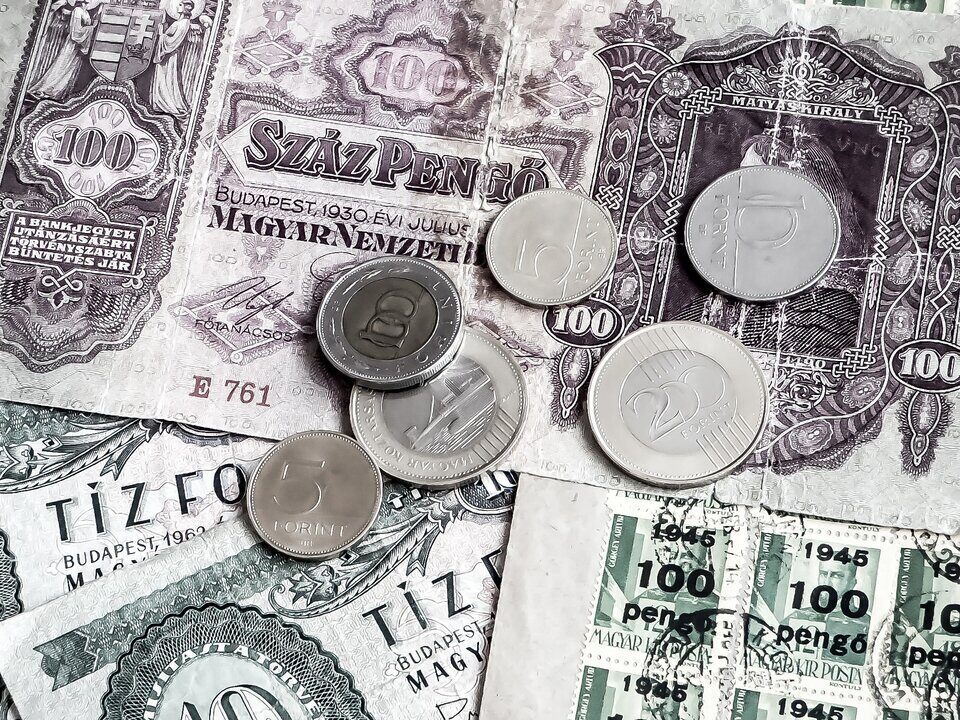TOP5+1 surprising facts about the Hungarian Forint

The forint has been the official currency of Hungary for 76 years this year. On the occasion of this anniversary, we have collected 5+1 surprising facts about the Hungarian currency, and we will also shed light on its darkest day ever.
76-year-old currency
The Hungarian forint was introduced in 1946, following the hyperinflation after World War II that had completely devalued the country’s currency of the time, the pengő. The critical economic situation was mainly caused by the devastation of the world war. The hyperinflation is best illustrated by the price of a kilogram of bread. In August 1945, the price of a kilo of bread was 6 pengő. Less than a year later, in June 1946, it was almost 6 billion pengő, reports the Hungarian news portal Origo. At this point, prices doubled every 15 hours, and the catastrophic situation only ended when the colonial government introduced the forint on 1st August 1946. The value of 1 forint was then fixed at 400,000 quadrillion (ten to the twenty-fourth) pengő.

The forint itself, however, is not a Hungarian invention and is much older than the current Hungarian forint. The gold forint, minted in Florence from 1252, was one of the most famous currencies of the Middle Ages.
Foreign exchange rates
Exchange rates were set centrally in the country at the time. In the year of the introduction of the new Hungarian currency, one US dollar cost 11.70 fillér (penny, the coins at that time) which remained unchanged for a long time. The strengthening of the dollar against the forint began in 1969 after the introduction of the new economic mechanism. At that time, one US dollar cost 30 forints. The situation was similar for the German marka, which was added to the Hungarian National Bank’s public list in 1955 at 2.80 forints. In 1969, it rose to 7.50 forints, and a few months later to 8.20 forints. The marka finally disappeared in 2002 at 124.50 forints when Germany adopted the euro as its currency, reports the Hungarian news portal Blikk.
The darkest day of the Hungarian Forint
The forint suffered its greatest weakness in the darkest days of the 2008 global financial crisis.
On 10th October 2008, the euro appreciated by 5.9%, jumping from around 249 forints to 269 forints.
The extreme exchange rate fluctuations is reflected in the fact that the forint broke a positive record on the very next trading day, 13 October, when the euro was 4.1% cheaper. Two days later, the forint broke down again, but these were the worst days of the US financial crisis (during the Lehman Brothers bankruptcy).
What happens to used banknotes?
Did you know that the paper notes are made of a special material – cotton – thanks to which their average lifespan is 4-5 years. This is the time by which it becomes so used up that it has to be withdrawn from circulation. The coins are much more resistant and can even stay in circulation for up to 28 years.
The ones that cannot be used anymore are destoyed by a machine and torn into pieces. The few millimetres thick notes are pressed into brick-shaped briquettes. And since these briquettes have a very high calorific value, similar to that of lignite, the Hungarian National Bank has been offering them (free of charge) to charitable organisations since 2008, reports Sulilife.
Protection against counterfeiting
Banknotes contain several security features to ensure protection against counterfeiting. There are some that are visible to everyone and others that require a special device, such as UV light, to make the image of the mounted courtier on the front of the 500 forint banknotes visible.
+1 The legend of the 200 forint banknote
Few may know the reason why the former 200 forint banknote bearing the portrait of Róbert Károly was withdrawn in 2009 after 11 years in circulation. The biggest problem with the banknote was that, as a small denomination, it was very heavily circulated and therefore wore out very quickly. This meant that it was very expensive to replace on an ongoing basis.

Even more interesting, however, is the portrait on the front of the note of King Róbert Károly of Hungary. The problem is that no authentic depiction of the Hungarian king has survived. But then who was really on the former 200 HUF? As it turned out later, the designer finally asked an acquaintance to pose as a model for the portrait of Róbert Károly.






You forgot to mention that the Forint is becoming more worthless by the day against mainstream currencies.